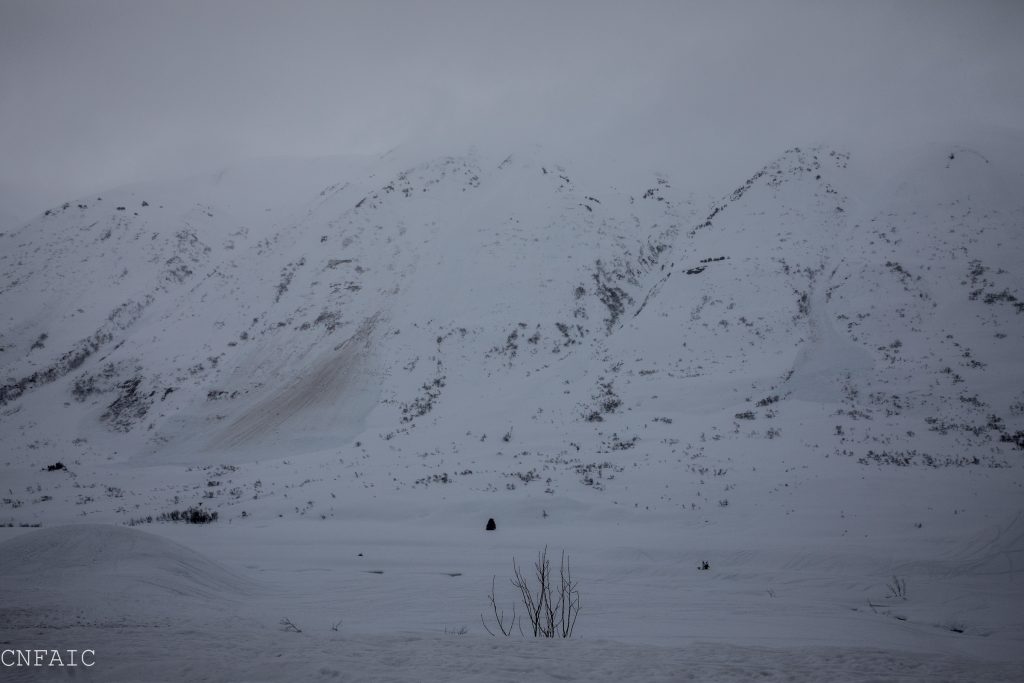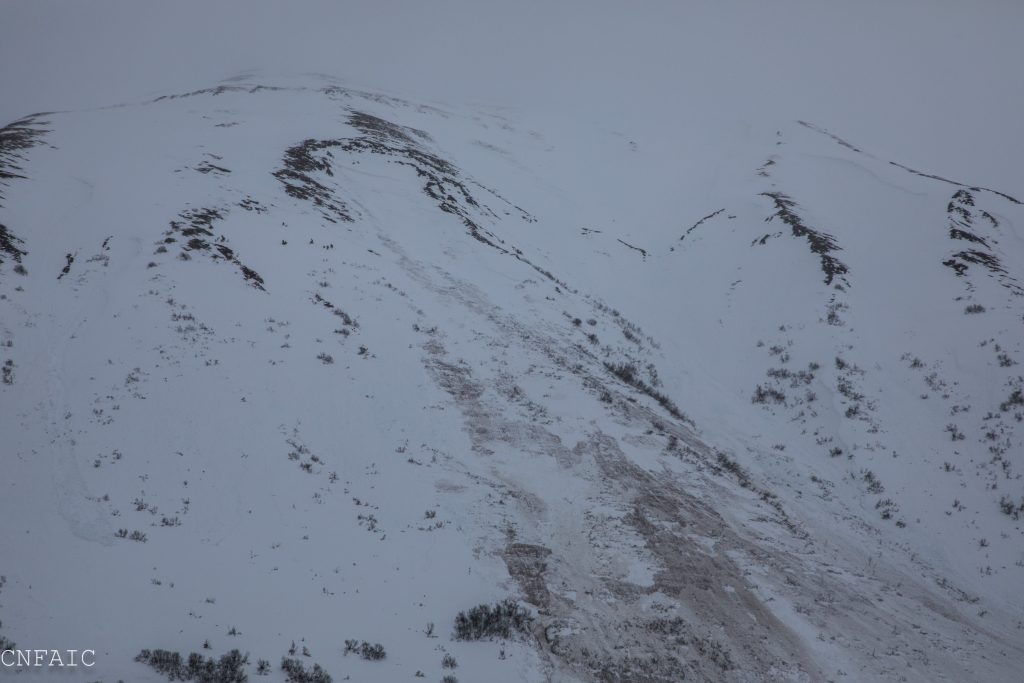Turnagain Pass
|
|
The avalanche danger will remain HIGH today for Turnagain Pass, Girdwood and Portage due to above freezing temperatures and the likelihood of natural wet slab avalanches below 3000′. In the alpine natural and human triggered storm slab 2-3′ deep are likely today and have the potential to step down into a very deep and dangerous avalanche. Travel in avalanche terrain is not recommended.
PORTAGE VALLEY: Travel in runout zones from avalanches including venturing along and past the Byron Glacier Trail continues to be not recommended. Very large avalanches have been observed in Portage over the past few days and are expected to continue today.
SUMMIT LAKE (& INTERIOR EASTERN KENAI MTS): Extra caution is advised. Large human triggered avalanches remain likely. Avalanches have the potential to release in old buried weak layers.
SEWARD/LOST LAKE: Warm temperatures, strong winds and a mix of rain and new snow have added more stress to the snowpack. Although less precipitation fell yesterday, triggering a large and dangerous avalanche is likely.
20 years ago today, March 21, 1999 a massive avalanche took the lives of 6 snowmachiners on Seattle Ridge in Turnagain Pass. Our deepest condolences are with the family and friends of those lost that day. In commemoration, CNFAIC forecasters and Friends of CNFAIC, will be at the Turnagain Pass motorized lot on Saturday, March 23rd, from 12pm – 2pm. We welcome any and all to stop by for a hot dog, say hi, chat about the current avalanche conditions, and test your avalanche rescue gear. We’ll have a few beacons buried so you can practice your skills.
Our thoughts are also with the family and friends of the skier killed in an avalanche on March 9th, 2019 near the Crescent Saddle Cabin. The detailed report can be found on our accidents page HERE. A big thank you to the backcountry partners involved in this accident for their willingness to share what happened so we can all learn.
Heading to Hatcher Pass? Be sure to check out the Hatcher Pass Avalanche Center mid-week snow and avalanche summary HERE.



